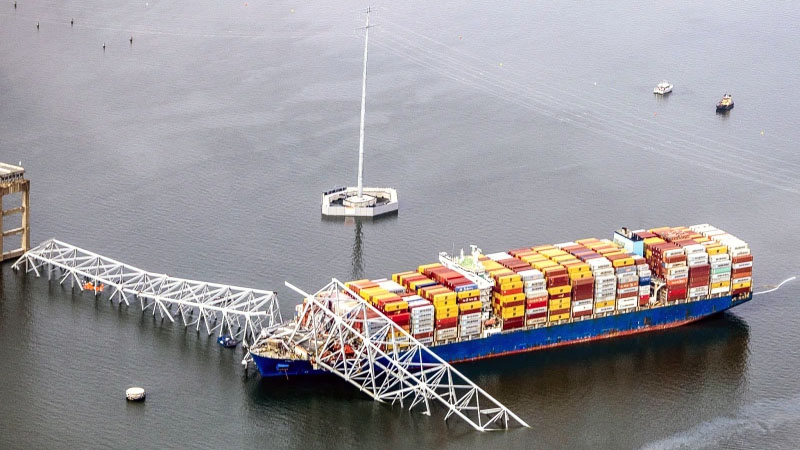In a shocking incident that unfolded under the cover of darkness on a Tuesday, a container ship collided with the four-lane Francis Scott Key Bridge in Baltimore, leading to a catastrophic collapse. The disaster sent both vehicles and individuals plummeting into the depths of the Patapsco River, sparking a frantic rescue operation.
Among the chaos, rescue teams were able to extract two survivors from the icy waters, with one reported to be in a grave condition. The search efforts continued, as teams combed the river for additional victims amidst the wreckage of the 1.6-mile bridge that had once spanned the waterway.
According to reports from ABC News, citing an unclassified US intelligence document, the vessel experienced a failure in propulsion while departing the port, leading to a loss of control. This critical loss of navigation was communicated to Maryland authorities by the ship’s crew as they grappled with the unfolding emergency.
The incident saw a substantial number of vehicles, estimated to be at least seven by Baltimore officials, plunging into the river’s murky depths. Initial reports from Kevin Cartwright, a spokesperson for the Baltimore City Fire Department, suggested the possibility of up to 20 individuals being caught in the river’s clutches, accompanied by numerous vehicles, including one as large as a tractor-trailer.
Described as a mass-casualty event involving multiple agencies, the response to this disaster was expected to extend over several days, underscoring the magnitude of the tragedy. Eyewitness footage captured the chilling moment the ship struck the bridge, illuminating the darkness with the headlights of vehicles that were sent tumbling into the water, while flames engulfed the ship.
This tragic event marked one of the most severe bridge collapses in the United States since the 2007 disaster in Minneapolis, where the I-35W bridge fell into the Mississippi River, claiming 13 lives. In response to the emergency, Maryland Governor Wes Moore declared a state of emergency, facilitating the rapid mobilization of federal resources to address the crisis. Despite the horrific nature of the incident, Baltimore Police Commissioner Richard Worley indicated there was no evidence suggesting an act of terrorism.
The Port of Baltimore, a crucial hub for vehicle shipments and other significant cargo, was forced to halt operations indefinitely. The collision not only disrupted the flow of goods but also raised concerns about the potential impact on other vessels and the port’s overall functionality.
Identified as the Dali, the Singapore-flagged container ship involved in the collision was under the management of Synergy Marine Group and chartered by the prominent shipping company Maersk at the time of the incident. Both the ship’s crew and the pilots were accounted for, with no reported injuries among them, providing a glimmer of hope amidst the devastation.
The port, known for handling a vast array of imports and exports, including automobiles and agricultural machinery, was left to assess the full extent of the damage. The collapse of the Francis Scott Key Bridge, a significant artery for transportation and commerce since its opening in 1977, posed a substantial setback for the region, highlighting the critical importance of infrastructure safety and emergency preparedness.

